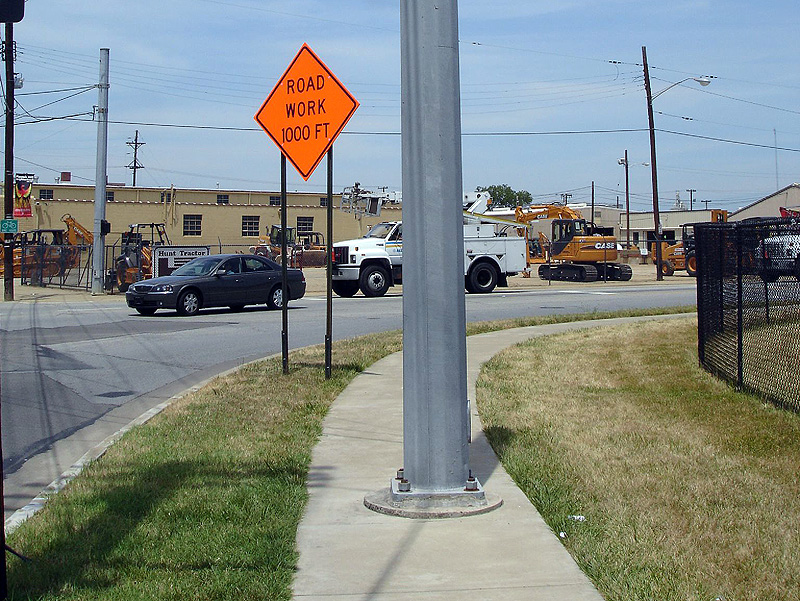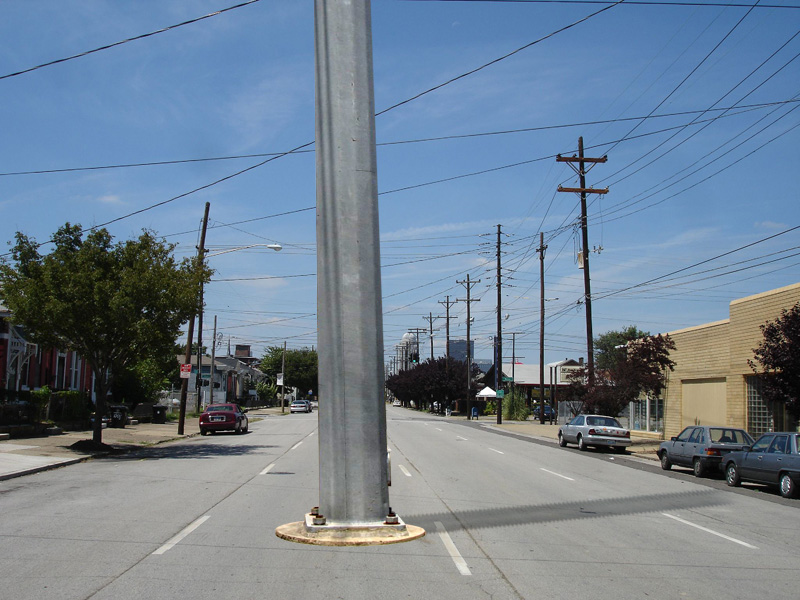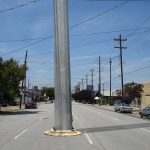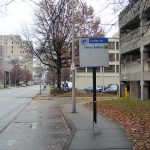
One of the many problems with transportation design is the obvious lack of regard for getting around without a car. We mean, come on. Who in their right mind builds a sidewalk like that? Is there a hidden camera waiting to capture inattentive pedestrians running into the pole?

It’s not just the pole (although that’s a huge part of it), its the rest of the sidewalk, too. The 3–4 foot wide sidewalk most commonly built today is really only wide enough for walking single file. At most you could try walking with a friend, but it can be tough sometimes. Nevermind groups of pedestrians walking in opposite directions. (And forget the handicapped population.) This is one pedestrian lane. There’s a 4–6 lane vehicular road right next to it. How about a 4 lane sidewalk?
Let’s see what happens if we reverse roles here. The above scenario certainly could make the morning commute more exciting. The sidewalk isn’t just an area on the side of the road to stick telephone poles and random signs. It’s more than a pretty idea or a government regulation. Sidewalks are where city life happens. Louisville must pay more attention to its public infrastructure and not pull ridiculous stunts like the pole in the road.







Horribly Wrong…
Via Broken Sidewalk.com Enough said…Tags: Louisville, Broken Sidewalks, Local Stuff……
[…] folks at Broken Sidewalk have exposed an interesting design problem. Oblivious non-design. Sidewalks with pedestrians not in mind. […]
[…] Photo from Broken Sidewalk.Today on the Streetsblog Network, we check in with the good people at Broken Sidewalk in Louisville, KY, who are talking about — you guessed it — sidewalks. More specifically, how […]
Sadly, Indiana is famous for this as well.
As a traffic engineer & traffic signal designer, I would say whoever designed that first pic should be shot – and I’m pretty sure its not ADA compliant – as far as I can tell sidewalks should have 5 ft clear space at all times, or provisions for a “passing” area. Its not inadvertant design, its just simply not paying attention to detail.
As for the rest of your argument for wider sidewalks, unfortunately given the budgetary constraints of local government, the sidewalks are a very expensive item that is easy to cut.
what’s more expensive to build a lane of traffic or a sidewalk ?
also note in the first photo – the radius of the corner is simply huge. It makes a pedestrian crossing the street have to walk through that much more traffic in order to get to the other side.
[…] Broken Sidewalks – This blog from Louisville, KY, shows something that cities do in sidewalks all the time that […]
And where is the pedestrian supposed to leave the sidewalk to cross the street? I don’t see any walkway/ramp section leading to the street. Of course, some might say it’s not safe to cross that street, so regardless of where the pedestrian might be attempting to go, they should continue to walking until they get to a better crossing point. Or would that result in them going around the block and ending up at the same location again?
Good point. There isn’t any pedestrian access to the street from this corner. There aren’t any crosswalks either. To cross, a pedestrian would have to walk 500 feet to the end of the next block in either direction and 500 feet back (or of course, cut through the grass and jaywalk).
Yeah that first picture is where Bardstown rd, Chestnut and Jefferson converge. Theres also a wierd traffic pattern too.
The second picture is on Chestnut by JCTC. The Tiny parking structure to a nearby warehouse or whatever that building is in the background behind it. Or both. That sign could be put on the street light, no vehicle over 6’8 can pull in there anyway.
I dont know where that telephone is in the highlands but alot of the sidewalks are like that there and a few more all over the city.
[…] friends over at Broken Sidewalk have a great post on how sidewalks are often polluted with poles and other obstructions that would never be tolerated […]
In the UK they’d be sued by the people bumping in to the posts and their insurers (who would pay the damages) would soon get those responsible to move them. They make local authorities fix cracked sidewalks. I’m amazed this does not happen in the US.